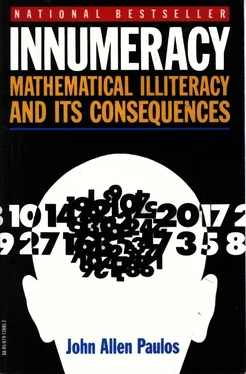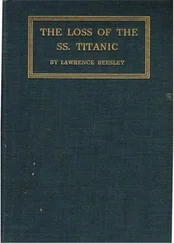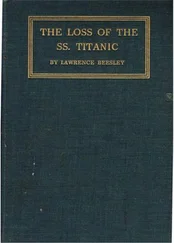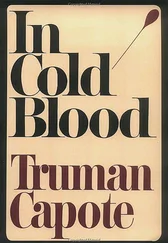Without some appreciation of common large numbers, it's impossible to react with the proper skepticism to terrifying reports that more than a million American kids are kidnapped each year, or with the proper sobriety to a warhead carrying a megaton of explosive power-the equivalent of a million tons (or two billion pounds) of TNT.
And if you don't have some feeling for probabilities, automobile accidents might seem a relatively minor problem of local travel, whereas being killed by terrorists might seem to be a major risk when going overseas. As often observed, however, the 45,000 people killed annually on American roads are approximately equal in number to all American dead in the Vietnam War. On the other hand, the seventeen Americans killed by terrorists in 1985 were among the 28 million of us who traveled abroad that year-that's one chance in 1.6 million of becoming a victim. Compare that with these annual rates in the United States: one chance in 68,000 of choking to death; one chance in 75,000 of dying in a bicycle crash; one chance in 20,000 of drowning; and one chance in only 5,300 of dying in a car crash.
Confronted with these large numbers and with the correspondingly small probabilities associated with them, the innumerate will inevitably respond with the non sequitur, "Yes, but what if you're that one," and then nod knowingly, as if they've demolished your argument with their penetrating insight. This tendency to personalize is, as we'll see, a characteristic of many people who suffer from innumeracy. Equally typical is a tendency to equate the risk from some obscure and exotic malady with the chances of suffering from heart and circulatory disease, from which about 12,000 Americans die each week.
There's a joke I like that's marginally relevant. An old married couple in their nineties contact a divorce lawyer, who pleads with them to stay together. "Why get divorced now after seventy years of marriage? Why not last it out? Why now?" The little old lady finally pipes up in a creaky voice: "We wanted to wait until the children were dead."
A feeling for what quantities or time spans are appropriate in various contexts is essential to getting the joke. Slipping between millions and billions or between billions and trillions should in this sense be equally funny, but it isn't, because we too often lack an intuitive feeling for these numbers. Many educated people have little grasp for these numbers and are even unaware that a million is 1,000,000; a billion is 1,000,000,000; and a trillion, 1,000,000,000,000.
A recent study by Drs. Kronlund and Phillips of the University of Washington showed that most doctors' assessments of the risks of various operations, procedures, and medications (even in their own specialties) were way off the mark, often by several orders of magnitude. I once had a conversation with a doctor who, within approximately twenty minutes, stated that a certain procedure he was contemplating (a) had a one-chance-in-a-million risk associated with it; (b) was 99 percent safe; and (c) usually went quite well. Given the fact that so many doctors seem to believe that there must be at least eleven people in the waiting room if they're to avoid being idle, I'm not surprised at this new evidence of their innumeracy.
For very big or very small numbers, so-called scientific notation is often clearer and easier to work with than standard notation and I'll therefore sometimes use it. There's nothing very tricky about it: 10 Nis 1 with N zeroes following it, so 10 4is 10,000 and 10 9is a billion. 10 -Nis 1 divided by 10 N, so 10 -4is 1 divided by 10,000 or.0001 and 10 -2is one hundredth. 4 x 10 6is 4 x 1,000,000 or 4,000,000; 5.3 x 10 8is 5.3 x 100,000,000 or 530,000,000; 2 x 10 -3is 2 x 1/1,000 or.002; 3.4 x 10 -7is 3.4 x 1/10,000,000 or.00000034.
Why don't news magazines and newspapers make appropriate use of scientific notation in their stories? The notation is not nearly as arcane as many of the topics discussed in these media, and it's considerably more useful than the abortive switch to the metric system about which so many boring articles were written. The expression 7.39842 x 10 10is more comprehensible and legible than seventy-three billion nine hundred and eighty-four million and two hundred thousand.
Expressed in scientific notation, the answers to the questions posed earlier are: human hair grows at a rate of roughly 10 - 8miles per hour; approximately 2.5 x 10 5people die each day on earth; and approximately 5 x 10 11cigarettes are smoked each year in the United States. Standard notation for these numbers is:.00000001 miles per hour; about 250,000 people; approximately 500,000,000,000 cigarettes.
BLOOD, MOUNTAINS, AND BURGERS
In a Scientific American column on innumeracy, the computer scientist Douglas Hofstadter cites the case of the Ideal Toy Company, which stated on the package of the original Rubik cube that there were more than three billion possible states the cube could attain. Calculations show that there are more than 4 x 10 19possible states, 4 with 19 zeroes after it. What the package says isn't wrong; there are more than three billion possible states. The understatement, however, is symptomatic of a pervasive innumeracy which ill suits a technologically based society. It's analogous to a sign at the entrance to the Lincoln Tunnel stating: New York, population more than 6; or McDonald's proudly announcing that they've sold more than 120 hamburgers.
The number 4 x 10 19is not exactly commonplace, but numbers like ten thousand, one million, and a trillion are. Examples of collections each having a million elements, a billion elements, and so on, should be at hand for quick comparison. For example, knowing that it takes only about eleven and a half days for a million seconds to tick away, whereas almost thirty-two years are required for a billion seconds to pass, gives one a better grasp of the relative magnitudes of these two common numbers. What about trillions? Modern Homo sapiens is probably less than 10 trillion seconds old; and the subsequent complete disappearance of the Neanderthal version of early Homo sapiens occurred only a trillion or so seconds ago. Agriculture's been here for approximately 300 billion seconds (ten thousand years), writing for about 150 billion seconds, and rock music has been around for only about one billion seconds.
More common sources of such large numbers are the trillion-dollar federal budget and our burgeoning weapons stockpiles. Given a U.S. population of about 250 million people, every billion dollars in the federal budget translates into $4 for every American. Thus, an annual Defense Department budget of almost a third of a trillion dollars amounts to approximately $5,000 per year for a family of four. What have all these expenditures (ours and theirs) bought over the years? The TNT equivalent of all the nuclear weapons in the world amounts to 25,000 megatons, or 50 trillion pounds, or 10,000 pounds for every man, woman, and child on earth. (One pound in a car, incidentally, demolishes the car and kills everyone in it.) The nuclear weapons on board just one of our Trident submarines contain eight times the firepower expended in all of World War II.
To cite some happier illustrations for smaller numbers, the standard I use for the lowly thousand is a section of Veterans Stadium in Philadelphia which I know contains 1,008 seats and which is easy to picture. The north wall of a garage near my house contains almost exactly ten thousand narrow bricks. For one hundred thousand, I generally think of the number of words in a good-sized novel.
To get a handle on big numbers, it's useful to come up with one or two collections such as the above corresponding to each power of ten, up to maybe 13 or 14. The more personal you can make these collections, the better. It's also good practice to estimate whatever quantity piques your curiosity: How many pizzas are consumed each year in the United States? How many words have you spoken in your life? How many different people's names appear in The New York Times each year? How many watermelons would fit inside the U.S. Capitol building?
Читать дальше












